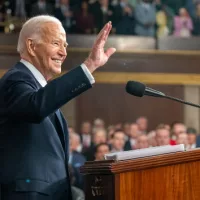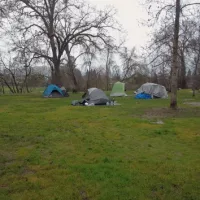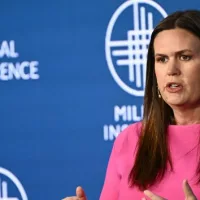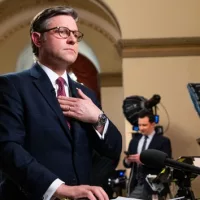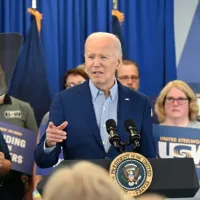
NoDerog/iStock(WASHINGTON) — American elections have long been awash in cash, but a decade after the Supreme Court eliminated limits on political spending by outside groups, watchdogs say the system is drowning in it.
Ten years ago this week, the court decided Citizens United v FEC, a landmark 5-4 ruling that unleashed billions of dollars from corporations, labor unions and other groups into American campaigns as a protected form of free speech.
“The decision stands for freedom and encourages participation in the political process,” said Michael Boos, vice president and general counsel of Citizens United, the conservative nonprofit organization which successfully challenged federal caps on independent political spending. “Money is speech, and that is a reality. Without money you can’t get your message out.”
The 2020 election is projected to be the most expensive in history, in large part due to the spending by groups the Citizens United decision made possible, analysts say.
“The system today is funded by influence-seekers,” said Fred Wertheimer, president of Democracy 21, a nonpartisan campaign watchdog. “We’ve had problems all along, but Citizens United just magnified it tremendously.”
The 2010 case cleared the way for creation of Super PACs, the political entities which can raise and spend unlimited sums to influence elections, so long as they don’t explicitly coordinate with a candidate.
During the 2016 campaign, more than 2,300 Super PACs spent $1.1 billion — nearly 17% the $6.5 billion amount spent by all parties involved in the election cycle at all levels. Most of that money came from just 100 donors, according to the nonprofit Center for Responsive Politics.
By comparison, in 2010, there were just 83 active Super PACs, spending a combined $63 million during the cycle, the group said.
Super PACs have spent more than $2.9 billion in federal elections between 2010 and 2018, according to data compiled by the Center for Responsive Politics. That’s just over 11%.
All outside groups, including Super PACs, labor unions, trade associations, corporations and others, spent a combined $5.6 billion in federal elections between 2010 and 2018. That’s just over 21% of all spending in federal elections over the same period.
Corporations, unions and many of the nation’s wealthiest donors — reluctant to draw negative attention for direct contributions to candidates or campaigns — have poured funds into Super PACs, which are less well known and harder for the public to track.
Justice Anthony Kennedy, writing for the Supreme Court majority in Citizens United, concluded that the spending is protected by the First Amendment and cannot be considered a corrupt quid pro quo.
“The fact that a corporation, or any other speaker, is willing to spend money to try to persuade voters presupposes that the people have the ultimate influence over elected officials,” Kennedy wrote.
Two months later, in a separate case, the justices took things even further, striking down limits on contributions to independent political groups altogether.
“Justice Kennedy was generally skeptical of government regulation of constitutional rights–including the freedom of speech. I think his Citizens United opinion reflected his preference for liberty, rather than control,” said Josh Blackman, a constitutional law professor at South Texas College of Law. “Moreover, I think both Republicans and Democrats alike have benefited from Citizens United. This decision is our new normal.”
With each successive year since the case was decided, spending in American political campaigns has continued to climb. The 2016 federal elections cost $6.5 billion, up 3% from four years earlier, according to the Center for Responsive Politics. The total cost of the 2000 election, by contrast, was around $3 billion.
The growing involvement of outside political groups is largely responsible for the increase.
Spending by all political organizations — other than the candidates’ campaigns — has increased from $1.3 billion in 2012 (a presidential year) to $1.6 billion in 2016 (another presidential year). Between those two contests, Super PAC spending increased as a share of all outside money, from 47% to 64%.
The efforts by independent organizations to influence voters is not limited to presidential elections. During the 2014 midterm campaign, Super PAC spending was $345 million. In 2018, another midterm year, that jumped to $822 million, the data from the Center for Responsive Politics shows.
“The thought that the Constitution requires this toxic state of affairs is astonishing,” wrote four prominent constitutional and campaign finance scholars in a 2017 University of Chicago Law School working paper.
“According to the Supreme Court, Congress many prohibit a $5500 contribution to an official campaign because this contribution is corruption or creates the appearance of corruption,” the authors, Albert Alschuler, Laurence Tribe, Norman Eisen and Richard Painter, wrote. “However, Congress may not prohibit a $20 million contribution to a Super PAC because this contribution does not corrupt or create even an appearance of corruption.”
The federal contribution limit direct to candidates was $5,400 during the 2016 campaign cycle.
“The reason Super PACs are necessary is because of the artificially low contribution limits for candidates,” said Boos. “A standard political action committee (PAC) can only give $5000 to a candidate. That’s it, per election, and that’s the same limit that was in place in 1976. It hasn’t even kept up with inflation.”
Millions of voters say they are dissatisfied with the status quo.
A recent Pew Research Center survey found 3 in 4 Americans — including majorities of Republicans and Democrats — believe there “should be limits on the amount of money individuals and organizations” can spend in political campaigns.
Nearly as many believe it’s important that major political donors do not have more influence than others, the poll found.
Dozens of states have tried to implement their own campaign finance reforms in the wake of Citizens United.
Thirty-nine states restrict the amount individual donors can contribute to state campaigns, according to the National Conference of State Legislatures. But those laws have had mixed success.
In November 2019, the Supreme Court struck down Alaska’s campaign contribution limits of $500 per candidate, per year in state races, saying such a stringent cap could violate the First Amendment.
“A contribution limit that is too low can therefore prove an obstacle to the very electoral fairness it seeks to promote,” they wrote.
Twenty states have endorsed amending the Constitution to authorize Congress and states to set limits on campaign fundraising and spending, according to American Promise, a nonprofit organization leading the nationwide effort.
“Amendments are rare, and they’re hard. But they do happen,” said the group’s CEO Jeff Clements. “We did four amendments between 1961 and 1971 — in ten years — and you think about how turbulent that period was. Those were difficult times. Americans know we have some big structural problems we have to fix. I see this happening within a decade.”
“It’s about free speech,” Clements added. “Real free speech means some limits on the megaphone so that all ideas are heard.”
In Congress, the House passed Democrat-sponsored legislation in 2019 that would overhaul the nation’s campaign finance system and establish an optional 6-to-1 public matching system for political donations under $200. It has stalled in the Republican-controlled Senate.
“Eventually Citizens United is either going to be overturned or we’re going to pass an amendment,” said Wertheimer. “But there is a more immediate solution, and we’re very close now. If you can create another way of financing elections, and we’re on the doorstep right now, you can give candidates the opportunity to be free from the flood of influence-buying money that they face every two years.”
Copyright © 2020, ABC Audio. All rights reserved.






